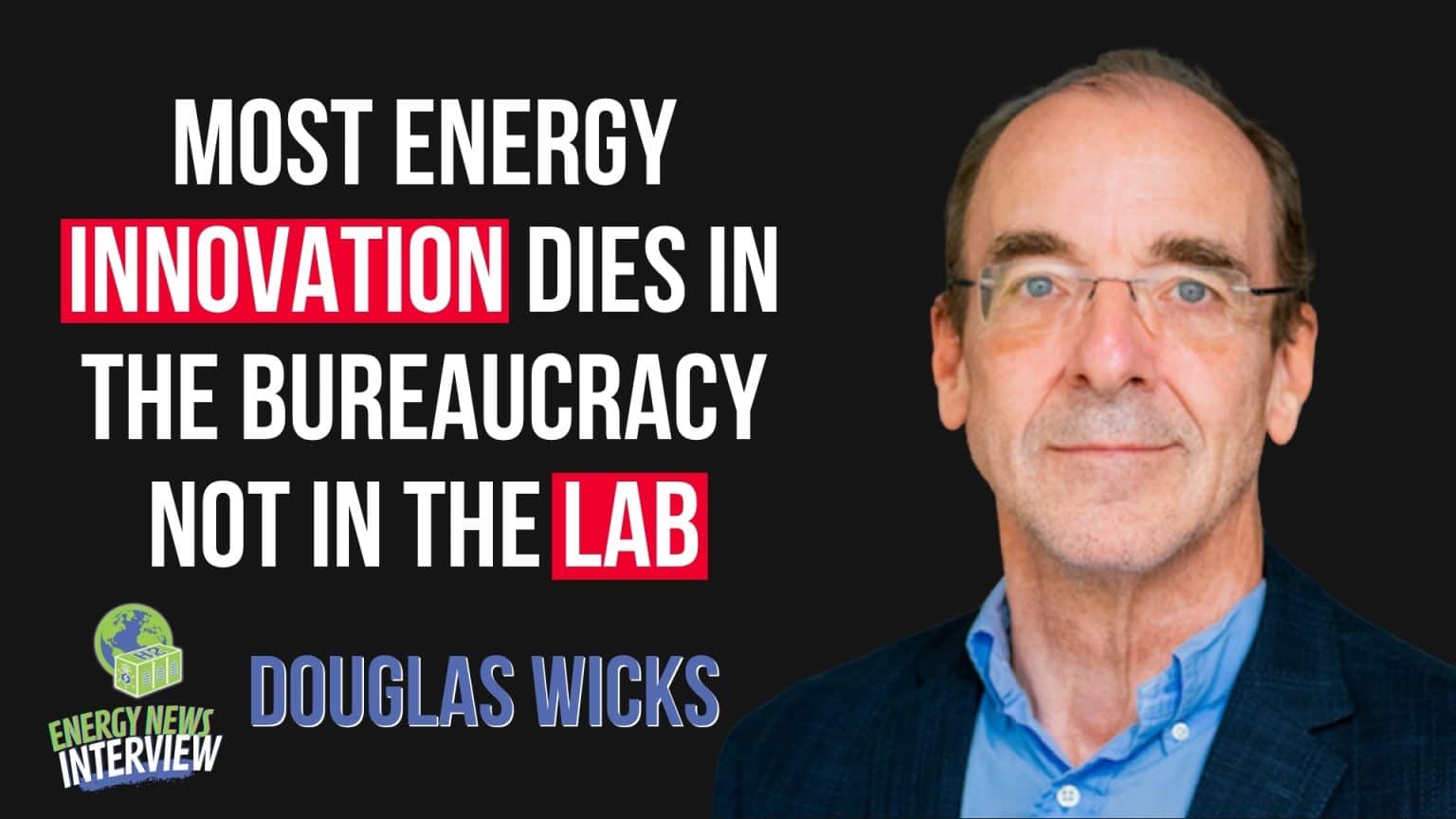In 2023, U.S. venture investment in energy innovation dropped 27% from its 2021 peak. While inflation and interest rates played a role, insiders suggest a more systemic issue: a stagnating ecosystem that fails to scale bold ideas. Doug Wicks, a former Program Director at ARPA-E, has seen firsthand why so many promising solutions fall short—not in the lab, but in the systems meant to support them.
WATCH THE FULL INTERVIEW HERE
Wicks, now an independent strategic advisor, believes the U.S. energy innovation pipeline is undermined by bureaucratic inertia and a reluctance to prioritize “fast failure” over procedural rigor. “We’re not going anywhere,” he clarifies, “we’re just not going fast enough.” His critique comes at a time when the stakes are escalating. According to the International Energy Agency (IEA), global energy-related CO₂ emissions rose to 37.4 gigatonnes in 2023, a record high, with clean tech deployment still lagging what’s needed for net zero by 2050.
At ARPA-E, the Advanced Research Projects Agency–Energy, Wicks spent six years funding high-risk, high-reward energy projects. The agency is modeled on DARPA’s fast-moving, high-impact approach. But as Wicks explains, energy innovation hasn’t benefited from the same urgency. “It can take years to approve a new program,” he says, citing internal resistance, leadership delays, and the lack of an agile funding mechanism. “In the meantime, transformative ideas lose steam or get scooped by faster ecosystems.”
The Leadership Bottleneck
One of the structural flaws Wicks highlights is the Senate-confirmed leadership requirement for ARPA-E. During Biden’s first term, ARPA-E was without a confirmed director for two out of four years. Wicks compares this with DARPA, which operates under a direct presidential appointment, allowing immediate strategic pivots. The result, he says, is predictable: “Without someone at the helm, no one wants to make a risky call. So nothing gets done.”
This vacuum doesn’t just delay decisions—it stifles program design. Wicks argues that too often, funding programs prescribe the solution rather than define the problem. “If you want to catalyze transformation, you don’t tell innovators how to solve it—you define what success looks like and let them figure it out.”
From Radical to Real
Some of the most promising ideas Wicks backed came from what he calls “white space”—unexplored areas like geologic hydrogen or radically reimagined mining. Startups like Phoenix Tailings emerged with unconventional approaches to industrial waste and mineral recovery. In one case, the founding team began their lab work on a back porch. “They didn’t wait for approval. They put skin in the game,” he recalls.
These ventures thrived because of their readiness to pivot, a trait Wicks believes should be a core criterion in funding. “The 10–15% of projects that go from lab to commercial scale all had one thing in common: adaptable leadership, not just good science.”
Yet, as Wicks notes, ARPA-E’s system has little tolerance for failure. When a project doesn’t meet early objectives, teams are often forced to re-enter a bureaucratic grant cycle, even if the core team is strong. “Industry would never fire its researchers after one failed product,” he says. “Why do we do it in public research?”
A Broken Economic Lens
Wicks also challenges techno-economic assumptions that fuel current policy directions. He aims for green hydrogen as a case study. “People kept saying we’d get to $1/kg hydrogen through electrolysis. But the thermodynamic input alone—40 kWh per kilogram—made that cost fantasy unless electricity was practically free.”
He calls the collapse of many green hydrogen startups in 2024 a foreseeable outcome. “We ignored basic economic inputs. It was like making sawdust from mahogany and calling it innovation.”
Instead, Wicks sees promise in natural hydrogen, geologically sourced hydrogen that may offer better economics and scalability. ARPA-E was among the first U.S. agencies to treat the field seriously. But even then, Wicks says, building momentum required 40–50 public talks and over 200 phone calls. “That’s how far outside the Overton window we were.”
Rewiring the System
Asked what it would take to fix this, Wicks points to a three-part framework: prioritize impact over pure science, evaluate without assuming subsidies, and radically reduce the time from idea to funding. He’s not against basic research, but insists the system must differentiate between speculative science and near-commercial potential.
The ideal, he argues, is a system that “runs fast, fails fast, and recycles the talent,” rather than punishing teams for failing to hit early-stage metrics. One of his best-performing projects, Rock Zero, was a complete pivot from the original objective. Under current systems, such a shift might have triggered termination.
In his final months at ARPA-E, Wicks was increasingly vocal about the need to treat subsurface mining, geologic hydrogen, and geothermal as a strategic infrastructure layer. “Everything we use, from wind turbines to batteries, comes out of the ground,” he says. “But we still mine like the Romans. That’s not innovation. That’s inertia.”
Final Takeaway
As the global energy transition collides with geopolitical instability and material shortages, the ability to move fast is no longer optional. It’s existential. The question, Wicks suggests, is not whether we have the tools—it’s whether we’re willing to let go of the systems that keep them locked away.
